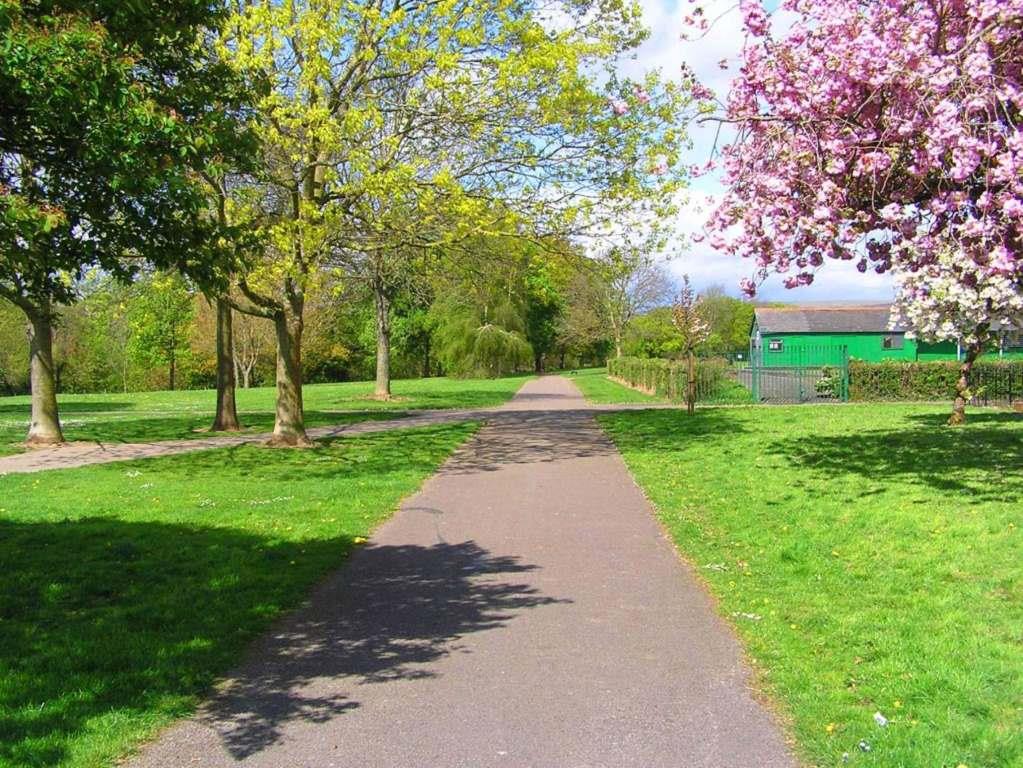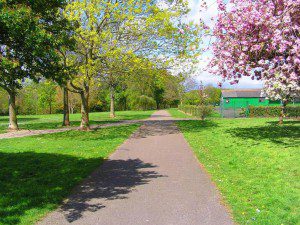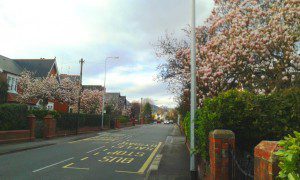More Trees Please!
By Kevin Revell
Securing a Stake in the Future
There are many reasons to plant a tree or two in your garden but few excuses not to. They are easily lost from the landscape but slow to grow back so time is of the essence. Aesthetically, they give solidity and a sense of permanence to a planting scheme, making use of the vertical space above, screening neighbouring houses or blocking the view of a road.
A tree will act as a focal point, breaking the monotony of a row of identical houses, a reference point on a long walk home as the tracery of branches reaches for the skies. They moderate the city heat as the sun beats down on hard concrete and tarmac surfaces, providing welcome shade in the heat of the summer, the transpired water vapour cooling the air. In season, they will provide colour from their blossom, foliage or fruit. Many have attractive textured ornamental bark extending the season of interest; some are evergreen and provide permanent screening. They don’t even have to be green, as demonstrated by the huge purple forms of copper beech or purple plum, familiar to readers around Llandaff and Whitchurch. Others light up the garden with blazing autumn colours and provide the useful resource of fallen leaves which can be converted into leaf mould used to improve the soil fertility and structure. Even the smallest garden can accommodate a small tree planted in a large container or a small copse of trees which can be cut back on a regular three or five year rotation to prevent them becoming too big.
Trees provide a vital resource to wildlife, providing roosts for shelter, nesting sites and hiding places from predators. They supply food to a wide range of birds, mammals and invertebrates. A large tree is more than capable of withstanding an attack of caterpillars or aphids, the birds will come from far and wide to feast on them as will wasps, ladybirds and hoverflies. A fruit tree will give a welcome harvest of fresh nutritious fruit for many years and also provides welcome blossom in the spring. The simple act of planting a tree will take a few hours planning, deciding which type to plant but has ramifications spanning decades and perhaps even centuries so it is not a decision to take lightly. Your decision projects your thoughts and give you a stake in the future, whether this is considered to be a good thing by those who come to inhabit your house and garden in future generations is a moot point but if planted in the right place it can be a thing of beauty enhancing the garden at certain times of the year or alternatively it may become a looming, hulking stealer of light and water, so choose carefully!
Blossom on trees is an indicator of spring from the early winter cherry, Prunus subhirtella ‘Autmnalis’ and purple plum Prunus ceracifera to the later Japanese flowering cherries such as the great white cherry, Prunus ‘Tai Haku’. Crab apples (Malus spp.) provide interest beyond this by providing ornamental fruit and are festooned with them long into autumn and in the case of the variety ‘Red Sentinel’ right through the winter or until a flock of hungry redwings or fieldfares chance upon it. ‘Golden Hornet’ is a bright yellow form while the orange striped ‘Evereste’ is always popular. Rowan trees bear berries in a range of colours; the familiar Mountain Ash or Sorbus aucuparia bears clusters of bright red fruit in late summer but the yellow variety ‘Joseph Rock’ makes an interesting change while the more adventurous gardener might try the shocking pink ‘Pink Ness’ or the white Sorbus cashmiriana. Cotoneaster is really a shrub but can attain tree-like proportions and some such as Cotoneaster fridgidus Cornubia are evergreen whose weeping branches are spangled with berries long into the winter.
The Local Scene
North Cardiff is fortunate in having many roads with substantial front gardens which lend amenity to the whole area when properly cared for. Heol Don or Church Road in Whitchurch and Palace Road or in Llandaff are well worth a visit during March and April. We owe a debt of gratitude to previous owners who had the foresight to plant a selection of trees and shrubs which chart the passage of spring. This floral patchwork is revealed daily in subtle changes as billowing ornamental plums herald stately magnolias, blizzards of cherry blossom drift into the fragrant confetti of crab apples and finally dusky pink hawthorn gives way to golden chains of laburnum. In an ideal world, any one garden would contain a number of these components but realistically each will only contain one or two trees which make it worthwhile borrowing the landscape of a neighbouring garden and planting trees to extend the season of interest rather than just keeping up with the Joneses. Seek out more unusual varieties to add interest and diversity.
Of course all this could be going on in back gardens across the city but it is in our front gardens that we share the view with our neighbours and passers by on their daily commute or walking past casting admiring glances on the way home. Many roads in Cardiff are well furnished with street trees and it is to the council’s credit that these have been maintained and replaced over the years. Whether this level of care is continued during this time of austerity remains to be seen. The venerable cherry trees of Tynewdd in Whitchurch are worth a look in spring while a local favourite of mine is the avenue of Liquidamber trees along Aberporth Road in Llandaff North. This is a remarkable sight in autumn as they take on fiery hues over a period of six weeks, some of the trees are quite substantial and seem incongruous in their modest surroundings but young trees have been planted to replace some of the older ones so future generations will be able to enjoy this seasonal display.
Kevin Revell is the Plant Area Manager at Caerphilly Garden



